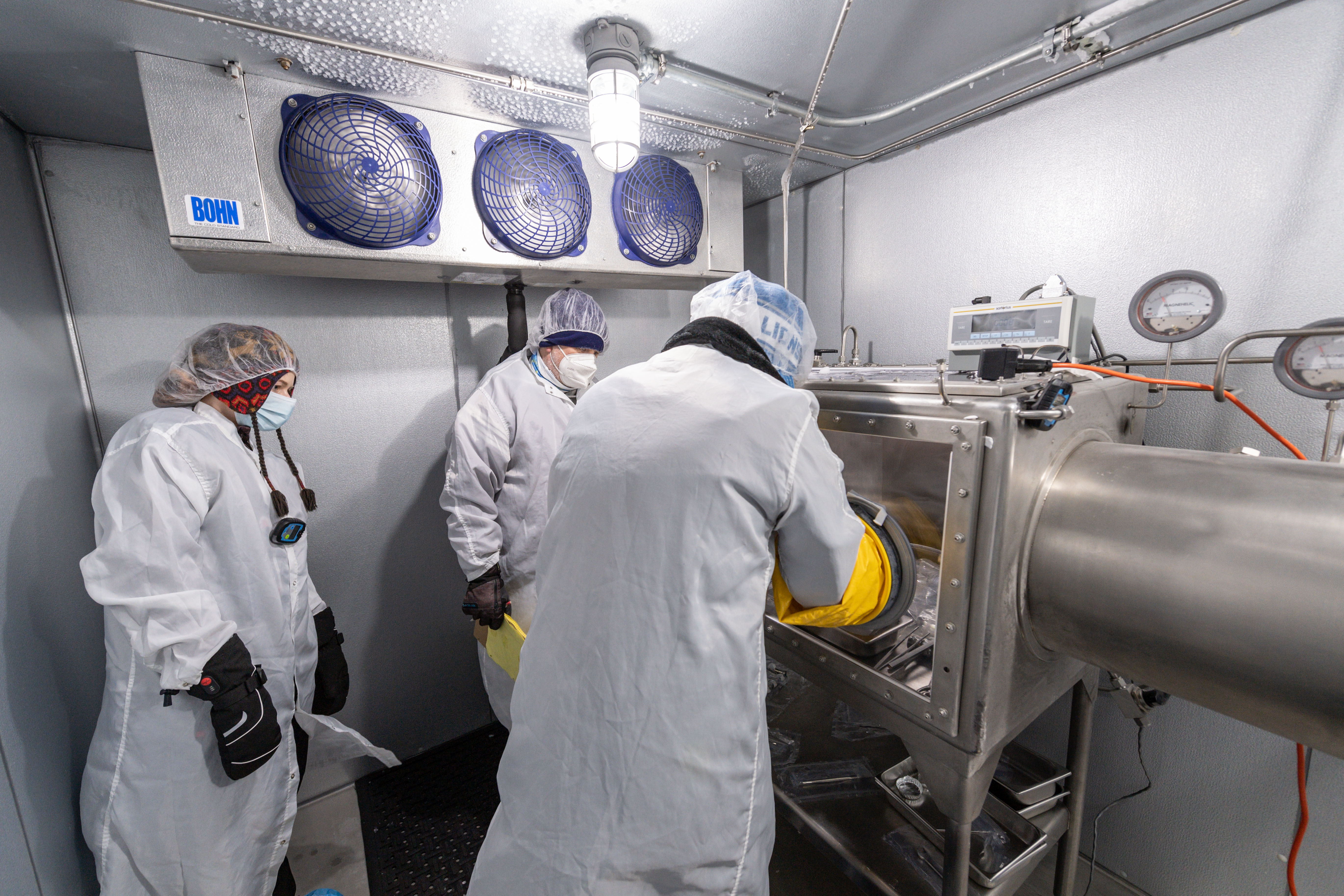NASA scientists start studying 50-year-old frozen Apollo 17 moon samples
NASA scientists have started to study 50-year-old samples of the moon's surface that were collected during the agency's final crewed moon landing mission, Apollo 17.
In March of this year, scientists at NASA cracked open a lunar sample collected during Apollo 17 and stored in 1972. The sample had sat in a freezer for decades at NASA's Johnson Space Center in Houston but recently made its way to the agency's Goddard Space Flight Facility in Maryland, where researchers have begun to examine it. NASA aims for this work to support future lunar sample studies that take place with its new crewed lunar landing program, known as Artemis.
"By doing this work we're not just facilitating Artemis exploration, but we're facilitating future sample return and human exploration into the rest of the solar system," Julie Mitchell, a NASA planetary scientist and engineer who leads the Artemis curation team at Johnson, said in a statement.
"I feel very privileged to contribute in this small way by developing the capabilities for us to collect these materials, bring them home safely and curate them for the long term," Mitchell added.
Related: NASA is cracking open a 50-year-old moon rock sample
Tricky logistics
Getting the Apollo 17 moon samples from the NASA site in Texas to Maryland was a process years in the making.
"We started this in early 2018, and there's been a lot of technical challenges that we've had to overcome to get to this point," Mitchell said. She added that moving these precious and fragile samples served as a rehearsal for how to handle and move future lunar samples. "This was seen as a practice run for preparing a facility for future cold sample processing," Mitchell said.
Breaking space news, the latest updates on rocket launches, skywatching events and more!
Before leaving for Goddard, the samples had to be processed while staying frozen. They were handled with thick gloves in a clear box within a walk-in freezer that is kept at minus 4 degrees Fahrenheit (minus 20 degrees Celsius). Managing these challenging, icy conditions is important for the team's preparation for collecting future Artemis samples.
"Being able to keep samples frozen will be important for Artemis as astronauts potentially return ice samples from the moon's south pole," the NASA statement reads.
Related: How NASA's Artemis moon landing with astronauts works
"Everything we do involves a lot of logistics and a lot of infrastructure, but adding the cold makes it a lot harder," Ryan Zeigler, Apollo sample curator in NASA's Astromaterials Research and Exploration Science Division at Johnson, said in the same statement.
"It’s an important learning lesson for Artemis, as being able to process samples in the cold will be even more important for the Artemis mission than it is for Apollo," Johnson added. "This work gives us some lessons learned and a good feed forward for Artemis."
Once processed, the samples were split up and shipped to Goddard "in a cooler with dry ice," before being stored in a new, secure freezer, the statement said.
Moon mysteries
It might seem that we've learned all there is to learn from samples collected over 50 years ago. But scientists at NASA have shared why they are so excited to explore these Apollo 17 rocks.
For example, previous research found amino acids in lunar samples. As amino acids are essential to life as we know it on Earth, exploring this further could help scientists to better understand how life originated not just on Earth but perhaps elsewhere in the solar system.
"We think some of the amino acids in the lunar soils may have formed from precursor molecules, which are smaller, more volatile compounds such as formaldehyde or hydrogen cyanide," Jamie Elsila, a research scientist in the Astrobiology Analytical Laboratory at Goddard whose focus is volatile organic compounds, said in the statement.
"Our research goal is to identify and quantify these small organic volatile compounds, as well as any amino acids, and to use the data to understand the prebiotic organic chemistry of the moon," Elsila said.
Related: 7 theories on the origin of life
Samples like these can also help scientists piece together the moon's history, Natalie Curran, the principal investigator for the Mid Atlantic Noble Gas Research Lab at Goddard, said in the same statement. Curran's focus is exploring lunar samples and figuring out what the pieces of the moon might have endured during their lifetimes.
"Our work allows us to use noble gases, such as argon, helium, neon, and xenon, to measure the duration a sample has been exposed to cosmic rays, and this can help us understand the history of that sample," Curran said. "Cosmic rays can be damaging to organic material that may be in a sample, so understanding the duration helps to determine the effects that exposure has had on the organic."
Curran further reflected on what it's like to be able to study pieces of the moon here on Earth.
"When you think of how these samples have come from another world, how far they have travelled and the solar system history they have preserved inside of them, it always blows my mind," she said.
Email Chelsea Gohd at cgohd@space.com or follow her on Twitter @chelsea_gohd. Follow us on Twitter @Spacedotcom and on Facebook.

Chelsea “Foxanne” Gohd joined Space.com in 2018 and is now a Senior Writer, writing about everything from climate change to planetary science and human spaceflight in both articles and on-camera in videos. With a degree in Public Health and biological sciences, Chelsea has written and worked for institutions including the American Museum of Natural History, Scientific American, Discover Magazine Blog, Astronomy Magazine and Live Science. When not writing, editing or filming something space-y, Chelsea "Foxanne" Gohd is writing music and performing as Foxanne, even launching a song to space in 2021 with Inspiration4. You can follow her on Twitter @chelsea_gohd and @foxannemusic.


